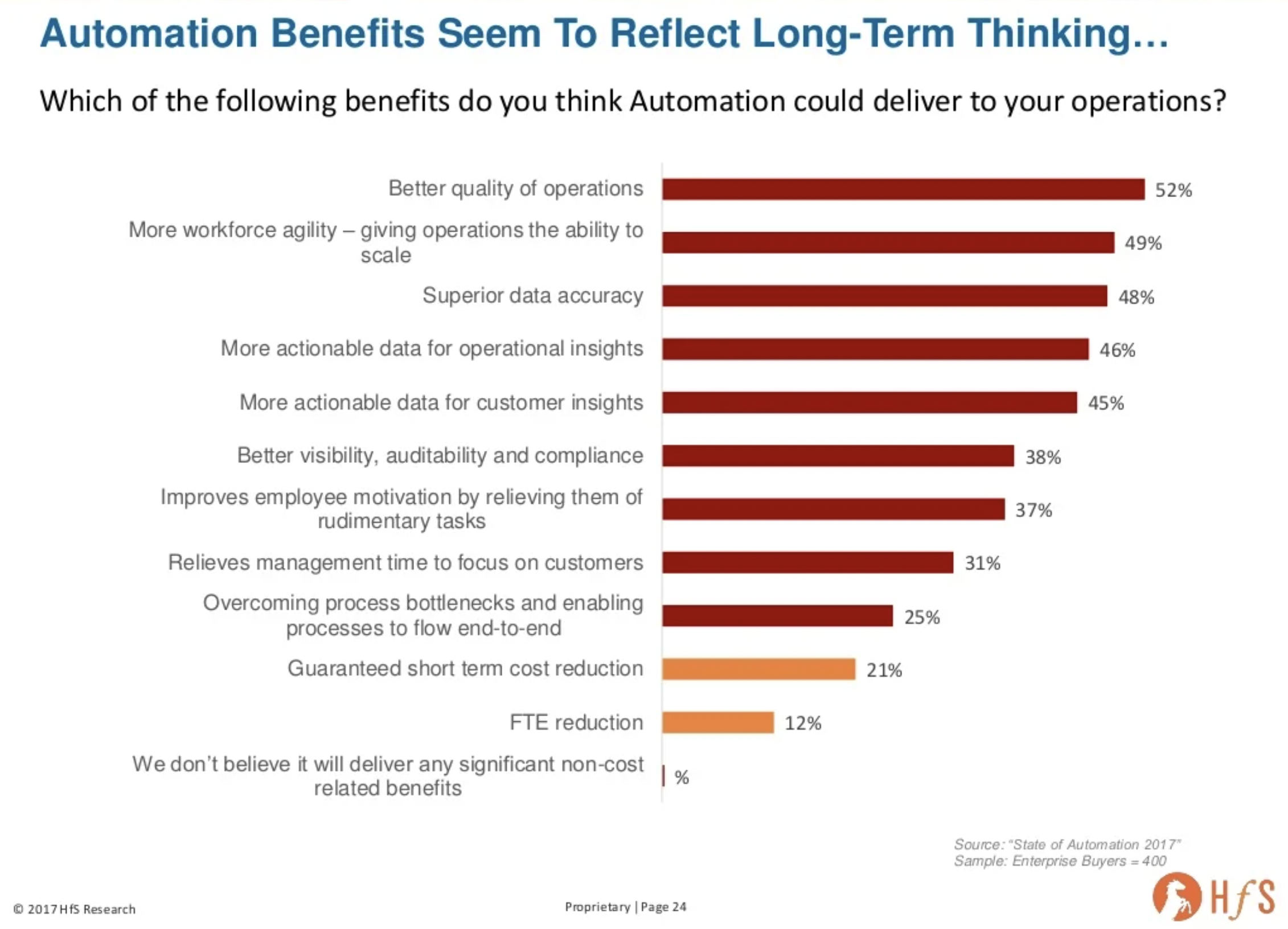Share at:

Editor's note: The article below was published in 2017. Get up-to-date information about web automation and UiPath automation capabilities.
Does constantly capturing the same type of data on the same web page or application sound repetitive and boring? Well, then you’re not alone. According to a Business Standard report, “the average employee loses 60 hours per month to easily automatable tasks.”
Think about manual tasks like form filling, screen scraping, data extraction and transfer between applications, website testing, and periodical report generation. The list goes on and on. Fortunately, with the advent of web automation tools like UiPath, you can easily automate these repetitive and tedious tasks and processes. And with McKinsey & Company estimating that “in about 60 percent of occupations, at least one-third of the constituent activities could be automated,” the potential for saving employee time is substantial.
What is web automation?
Web automation is the concept of leveraging automation tools and software robots to automate repetitive processes and tasks, like filling out lengthy forms or scraping content from web pages.
The key to automating these repetitive tasks is the use of software robots, specifically robotic process automation (RPA). RPA is a technology that makes it easy to build, deploy, and manage the software that emulates humans interacting with digital systems and software.
What are the benefits of web automation?
Web automation allows an organization to delegate low-value, repetitive, and often dull tasks to automation software. This, in turn, frees up valuable employee time and effort to focus on more engaging, rewarding, and high-value activities.
Many processes and applications today are structured around web-based systems. The information that populates these systems is often dense and demands extensive processing. However, populating these systems with the required data frequently involves repetitive tasks and human interactions—error-prone tasks like capturing new leads into a customer relationship management (CRM) web application from a spreadsheet.
Web automation can remove the human element from these low-value tasks, providing operational benefits like streamlining processes and saving time. According to an HfS survey of 400 enterprise organizations, the common benefits of automation can include better quality of operations, greater workforce agility, and improved data accuracy.

What web operations can you automate?
Thanks to this evolving technology, you can automate almost any manual data entry or capture involving web browsers and web elements within an application, whether it be a simple or complex task. Some common examples include:
Filling in online forms for the onboarding process of new employees
Performing the initial validation of job applicants to ensure they meet the minimum requirement set
Replying to the same frequently received customer queries with a set response
Capturing test data into a new web page or application for reliable unit testing
Inputting the required variables to generate and distribute a monthly report
Looking up and reporting on specific information, like the weather conditions for a location, at predefined times
Querying structured data from a spreadsheet, enhancing or validating the data, and then transferring to another application (check out this example)
How does UiPath web automation work?
Just like people, software robots can understand what’s on a screen, complete the correct keystrokes, navigate systems, identify and extract data, and perform a wide range of defined actions. But software robots can do it faster and more consistently than people, without getting tired, making mistakes, or taking coffee breaks.
UiPath web automation uses a built-in recorder that can read and enact web-based activities. Compatible with HTML, Flash, AJAX, Java, Silverlight, and PDF, the technology identifies web elements by their attributes and accurately manipulates them while keeping up with website changes. It works with any website, no matter how complex, and you can deploy it remotely on various machines in the network.
The RPA within UiPath web automation relies on two foundational capabilities, namely:
The ability for business users to configure automations with non-programmatic instructions
Functionality to record and mimic human actions, decisions, rules, and exceptions
The easy-to-use graphical workflow designer is intuitive and requires no coding skills. Importantly, this means that the individual already performing the task, who understands the process and steps, is best placed and able to create the automation without any programming knowledge.
With 100% playback accuracy, you consistently achieve excellent results regardless of the browser version, screen position, and size. By automating web-based workflows with UiPath, you ensure that accuracy requirements are met. More importantly, you save time and money—like Dentsu, who saved over 125,000 hours on their data migration project.
See UiPath web automation in action
One of the most commonly used features by our customers is the ability to enter data into a web page or web application based on Microsoft Excel spreadsheets or CSV files. Thanks to UiPath intuitive wizard and built-in activities, you can complete most automation tasks without any programming involved. The built-in activities for Excel are extensive, from the simple inserting or deleting of rows, columns, and sheets to the more complex working with formulas and macros.
This short video shows how easy it is to reconcile data from two different Excel spreadsheets to consolidate monthly employee expense data, produce a monthly expense file, and update the annual report.
Editor's note: curious about combining UiPath automation with Microsoft tools? Get up-to-date information.

Content Developer, Trekk
Get articles from automation experts in your inbox
SubscribeGet articles from automation experts in your inbox
Sign up today and we'll email you the newest articles every week.
Thank you for subscribing!
Thank you for subscribing! Each week, we'll send the best automation blog posts straight to your inbox.



